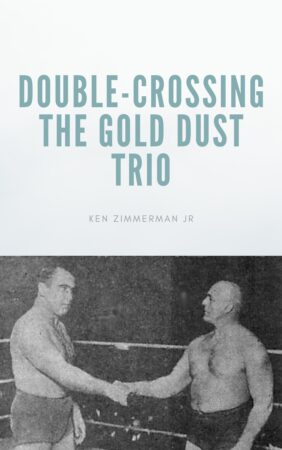Stecher Satisfè Pesek nan St.. Louis
Joe Stecher ak John “Tiger Man” Pesek te luteur lejitim nan yon prensipalman “te travay” epòk, kote match yo te predetèmine sof si yon moun te deside kwaze lòt wrèstè oswa pwomotè a lè li te vire match la nan yon konkou lejitim.. Double-kwaze sèlman te travay, si wrèstle a te kapab lejitimman genyen match la.
John Pesek didn’t like the worked nature of wrestling and often turned his matches into contests. Kòm yon rezilta, promoters hesitated to book him particularly against a champion because of Pesek’s propensity to “shoot” on his opponents. Sepandan, promoters considered Joe Stecher a match for Pesek, so St. Louis promoter Tom Packs was willing to schedule Pesek to wrestle current World Heavyweight Champion Joe Stecher.

Pi ansyen fim lit ki egziste (Public Domain)
The match occurred at the St. Louis Coliseum nan Jedi, Avril 29, 1926. Packs had been trying to arrange a match between Stecher and Ed “Strangler” Lewis. Sepandan, the old enemies were struggling to come to an agreement.
Pesek stepped into the void eager to wrestle Stecher. Pesek and Stecher outlasted much of the capacity crowd, who came to see the “Scissors Master” take on the “Tiger Man”. Prior to this match, Pesek disposed of two Olympic champions in legitimate contests so anticipation was at a fever pitch. The first fall came after 3 hours of hard wrestling.
Match la te kòmanse nan 10:10 p.m. on the evening of April 29th. Pesek wrestled defensively at first. It took Stecher 53-minutes to gain his first scissors hold on Pesek but Pesek bounced around until he freed himself from Stecher’s legs.
In the next hour, Stecher was able to secure his hold two more times but Pesek escaped the same way each time. Pesek was able to put a hammerlock on Stecher’s arm and almost injured the champion before Stecher reversed out of the hold.
Finally after 3 hours of wrestling, Pesek secured his wristlock, a legitimate submission hold forcing Stecher to submit. The men retired for a 20-minute rest. Both men were noticeably tired, when the match resumed.
Stecher had the better of Pesek in the 2nd round ending the fall with a double wing lock. It is one of the few matches that Stecher secured a fall with a hold other than his scissors lock.

Photo of John Pesek from the Public Domain
The men started wrestling again after a 20-minute rest. At the 40-minute mark, Stecher lifted Pesek off the ground, started to lose his balance and dropped Pesek out of the ring. Pesek struck his head and was knocked unconscious.
Pesek was carried from ringside as referee Harry Sharpe raised Stecher’s hand at 3:20 a.m. on Friday morning. Pesek suffered a concussion and was taken to the hospital.
Later in 1926, Stecher and Pesek did wrestle an acknowledged “shoot” although it was originally supposed to be a “te travay” match. Even though it looked like they were shooting, I believe this match was worked.
The length of the match and the three hours it took to secure the first fall argues for a legitimate contest. Legitimate contests can both long and boring. Wrestlers and promoters began working matches to increase fan interest. Promoter don’t want fans leaving before the main event ends because of the effect on future gates.
Stecher using an effective but less used move also argues he may have been “shooting” to protect his title against a dangerous opponent like Pesek. If Stecher meant to drop Pesek outside the ring, it would also argue for a “shoot”. St. Louis Post-Dispatch reporter Don H. Thompson believed it was a legitimate contest.
Sepandan, the ending is what troubles me. Wrestlers striking their heads on posts or floors is one of the oldest ways to “work” an ending. Frank Gotch “ran” into a ring post, when he dropped his belt to Fred Beell in an obvious work at the end of 1903. I still say work.
You can leave a comment or ask a question about this or any post on my Facebook page.
Source: St. Louis Star and Times, Avril 30, 1926 edition, p. 21
Pin It

